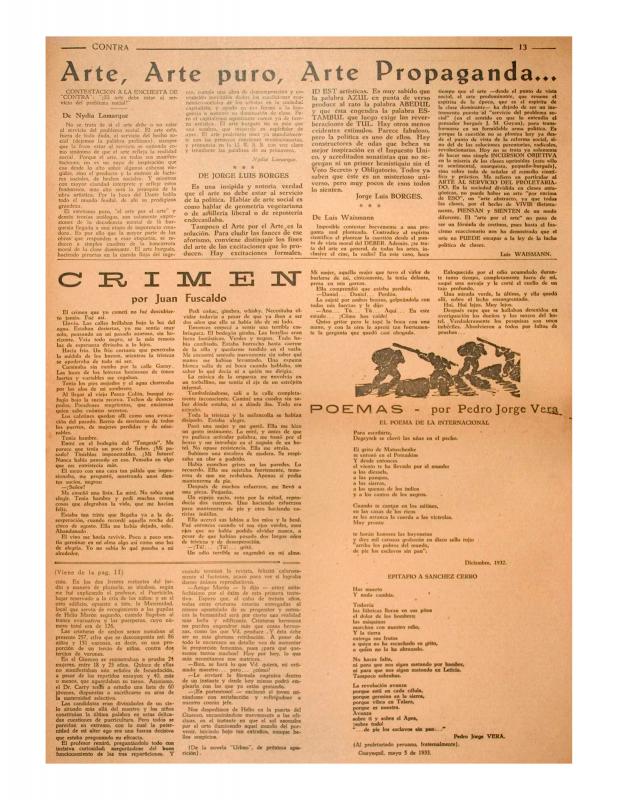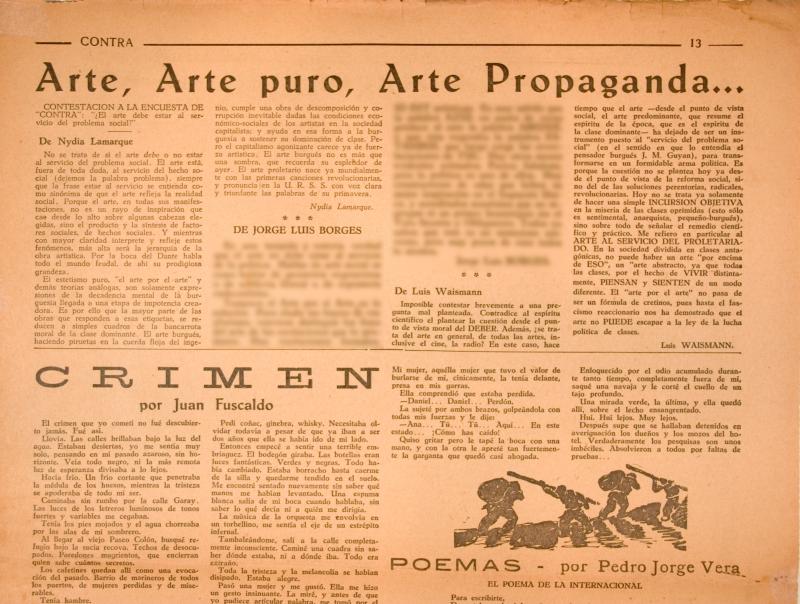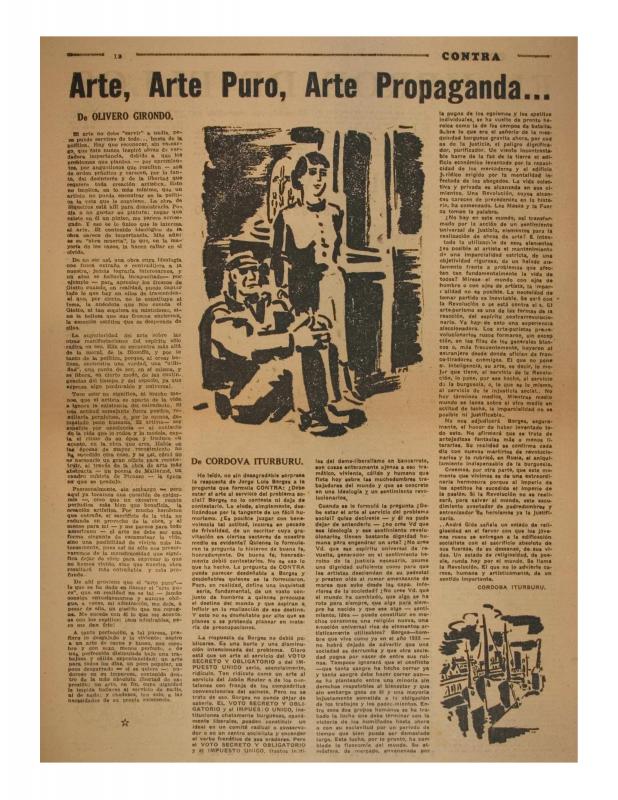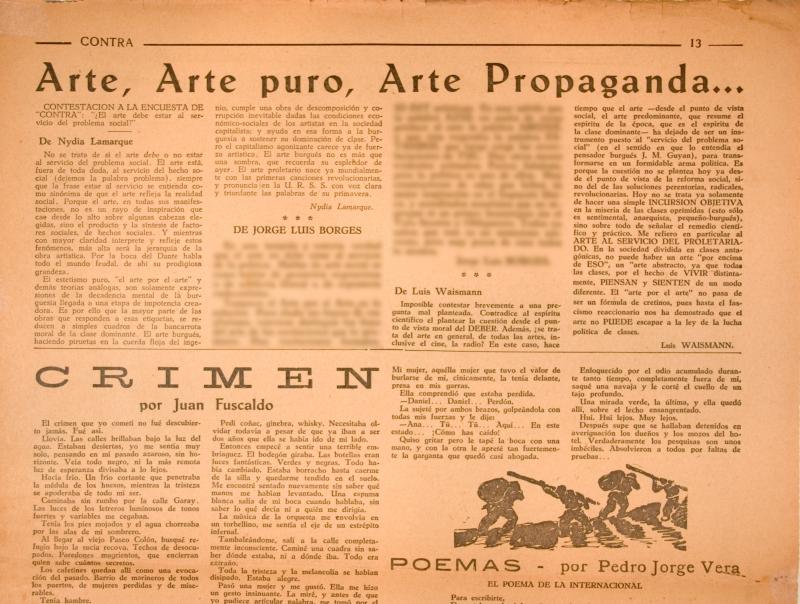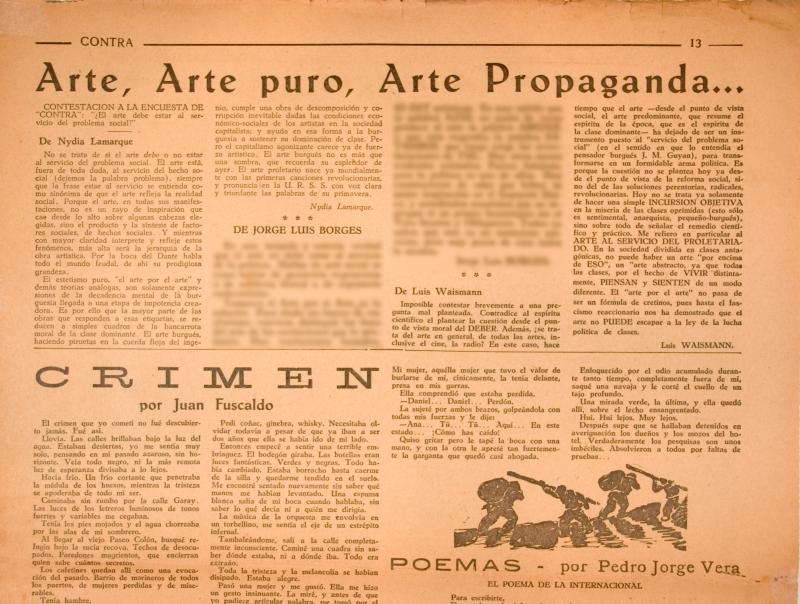Having been expelled from the United States, David Alfaro Siqueiros (1896–1974) traveled to Montevideo in February of 1933, and by the end of May in that same year he had established himself in Buenos Aires. In the River Plate, Siqueiros experimented with technique and presented arguments based on the contents of his lecture Los vehículos de la pintura dialéctico-subversiva [The Vehicles of Dialectical-Subversive Painting], which he had developed while in the United States.
This is part of a group of articles published in Contra. La revista de los francotiradores [Against: The Snipers’ Magazine]; the publication was run in accordance with the cultural directives of the Communist Party by poet Raúl González Tuñón, who was not officially affiliated with the party. As such, Contra functioned as a leftist publication that stimulated the militant debate of the literary and political avant-gardes. The magazine was published between April and September of 1933, approximately the months that Siqueiros spent in Buenos Aires, whose presence was pivotal to the publication. The majority of its collaborators had worked on the newspaper Crítica [Critique].
This document forms part of a subgroup of documents published in the magazine Contra [Against] regarding the survey “Should art serve social problems?” Cayetano Córdova Iturburu, a leftist art critic, was for a time close to the Communist Party and had also been a defender of the formal renovation of art (for example, as undertaken by Emilio Pettoruti in his work). For this reason, this document demonstrates the radicalization of intellectual circles toward politically committed art in the early-1930s. This change began to take place shortly after Stalinist ideology began to make dogmatic assertions regarding the implementation of Social Realism as the paradigm for proletarian art. Luis Waismann, Jorge Luis Borges, Nydia Lamarque, Oliverio Girondo, and Cayetano Córdova Iturburu responded to the survey. (See documents 730253, 733324, 730272, 730263, and 733529.)

